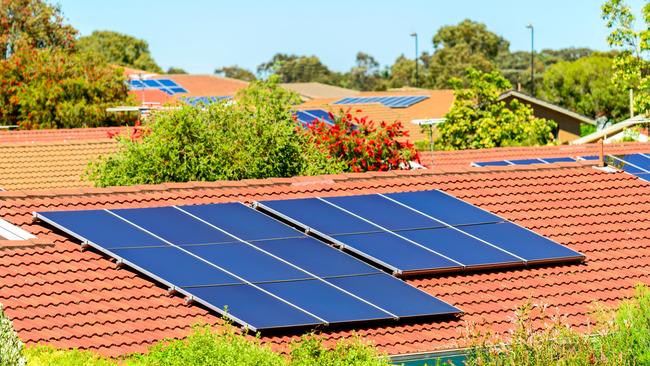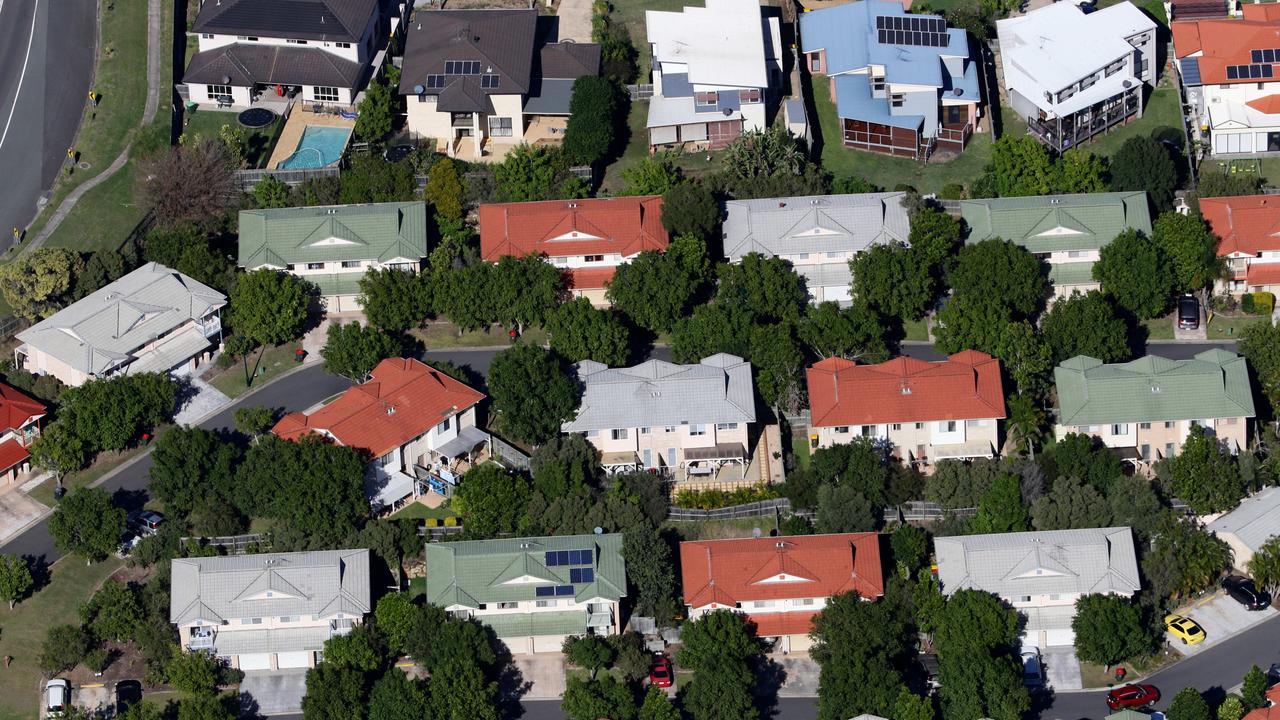Home buying guide: how to future proof your next property against energy bill rises
Energy bills are soaring, but with a few expert tips you can ensure your next home doesn’t come with a budget blackhole every time your electricity bill arrives.

Property
Don't miss out on the headlines from Property. Followed categories will be added to My News.
Australia’s National Construction Code will adopt stringent energy efficiency minimum standards for new homes next year.
But with the cost of power surging and millions of existing Aussie homes falling well short of the National House Energy Rating Scheme’s incoming seven-star efficiency requirement, there is a new frontier in housing affordability.
We’ve asked sustainability and energy experts what to look for to future proof your next home against bill shocks and potentially help entice buyers down the track.
RELATED: Reno queen Cherie Barber’s ‘Grim Reaper’ home warning
Real estate Australia: First homebuyers poised to survive interest rate crisis
Energy-efficient housing: New home build costs to rise as new energy code to boost costs
AGEING DISGRACEFULLY
Deakin University science, engineering and built environment professor Tony Arnel said when it came to energy bills, one of the biggest factors was a home’s age.
“You can safely say that the majority of Australia’s 10 million homes are poorly insulated and are draughty,” Professor Arnel said.
“Housing built before 2005 has very poor star ratings, often it’s about 1.8 stars on the NatHERS rating.”

He said these homes might increasingly need to be double glazed, better insulated and draught proofed to win buyers.
However, making such changes years ahead of selling would give them time to pay for themselves via lower energy bills, without having to worry if buyers would pay a premium.
He said homes in the ACT as well as most commercial buildings nationwide now had to disclose their energy efficiency rating to prospective buyers. If the rest of the nation adopted the practice for homes, data from Canberra hinted owners of inefficient homes could find it harder to sell.
EFFICIENT DESIGN
Australia’s most sustainable housing estate, The Cape in Cape Paterson Victoria, has an average eight-star energy-efficiency rating. Development director Brendan Condon said most had features energy-conscious buyers and tenants should keep an eye out for when hunting for a new place.
Mr Condon advised looking for a floorplan with north-facing living spaces with lots of windows for light and warmth. Bedrooms should be on the south side of the floorplan, where they will stay cool in summer. The western side should have minimal windows.
He noted homes with more than 250sq m of interior space were also more difficult to maintain energy efficiency in.

Good shade and gardens are also beneficial as they can counter heat island effects in summer where extended periods of warm weather result in concrete trapping heat.
Areas known for leafy streets can be cooler in summer. “But places like Melbourne and Sydney’s western suburbs are currently more susceptible to heat island effects due to a lack of tree canopy from past development,” Mr Condon said.
Prof Arnel also advised looking for homes using heat pumps to keep rooms cosy and water hot as gas appliances were being gradually phased out. He added that heavier construction, such as brickwork, typically managed thermal efficiency better than lightweight ones, like weatherboards.
“And light-coloured roofs are better than dark as they reflect heat rather than absorb it,” he said.
ASK AN EXPERT

For those creating a new home, Mr Condon said an expert with a background in building sustainable homes could consult with volume builders to assess the quality of materials and insulation being used.
He estimated this would cost from $1000-$2000, while having an existing home assessed could cost from $300-$1000 depending on how much detail was sought
“They will tell you the low-hanging fruit and the more costly options,” Mr Condon said.
SUN WORSHIP
Origin consumer and property general manager Duncan Permezel said the energy group had launched an online solar energy assessment tool in March this year.
It assesses satellite imagery and other public information to work out a home’s roof size, orientation and pitch to determine how well suited it is to adding solar panels.
“Northern orientations with the right pitch are optimal,” Mr Permezel said. “But there are some homes that will have an orientation that is not suitable for solar.”
He noted Queenslanders would have the best odds of a sun-friendly roof, while Victorian and Tasmanian homes could be “more problematic”.

Where a home does suit solar, Mr Permezel said the payback period for installing rooftop panels was about five years – though it could be as little as three for homes with particularly good orientation and energy-efficient electric appliances.
He said a 6.6kW system was the most common today, but noted that if a home already had solar installed, buyers should ask who had put them in and when.
Most solar arrays last about 20 years with minimal servicing, though some parts, such as inverters, need to be replaced after five. It could also be difficult to pursue warranties for systems installed by defunct businesses.
DRIVING IT HOME
Mr Condon said that homes with a garage could become more valuable as they were better placed to accommodate electric vehicles.
“Ideally you will want a garage, though you might be able to weatherproof one (electric charge station) for a carport,” he said. “And that will be until we have very widespread electric vehicle charging infrastructure in suburban streets.”
At present, special infrastructure needs to be added to most homes to allow for three-phase power or a 32 amp charging station for EVs.

For those building a home, Mr Condon said you would need to request 32 amp power infrastructure from your builder specifically, though an electrician could usually retrofit it for about $500. These costs could be higher in apartment buildings, which would also usually require approval at a strata or owners-corporation level.
Sign up to the Herald Sun Weekly Real Estate Update. Click here to get the latest Victorian property market news delivered direct to your inbox.
MORE: Hospital and hospitality bosses urged to consider giving staff cheap rent
School zones: what you need to know before you buy
Why collecting building and pest reports when buying property is so important


